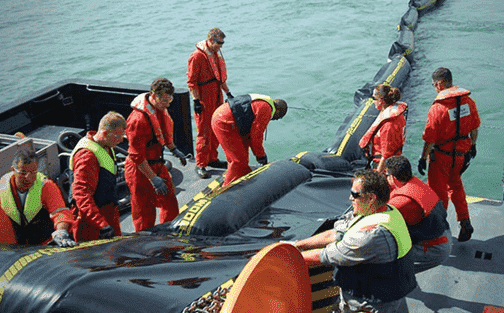COURSE OVERVIEW
HE1383 : Safety Management Specialist (SMS) BCSP-SMS Exam Preparation Training

OVERVIEW
| COURSE TITLE | : | HE1383 : Safety Management Specialist (SMS) BCSP-SMS Exam Preparation Training |
| COURSE DATE | : | Aug 04 - Aug 08 2024 |
| DURATION | : | 5 Days |
| INSTRUCTOR | : | Mr. John Taljard |
| VENUE | : | Dubai, UAE |
| COURSE FEE | : | $ 5500 |
| Request For Course | ||
OTHER SCHEDULED DATES
| Date | : | May 13 - May 17 2024 (5 Days) | Location | : | Abu Dhabi, UAE | Classroom Fee (US$) | : | $ 5500 | Course Info |
| Date | : | Aug 04 - Aug 08 2024 (5 Days) | Location | : | Al Khobar, KSA | Classroom Fee (US$) | : | $ 5500 | Course Info |
| Date | : | Nov 03 - Nov 07 2024 (5.0416666666667 Days) | Location | : | Dubai, UAE | Classroom Fee (US$) | : | $ 5500 | Course Info |
Course Description
This course is designed to provide participants with a detailed and up-to-date overview of Safety Management Specialist (SMS). It covers the techniques that encourage employee involvement and commitment to safety in the workplace; assessing safety, health and environmental training needs and requirements (regulatory and risk-based); conducting an internal safety, health and environmental audit; communicating safety expectations on multi-employer/contractor worksites and setting and prioritizing safety-related goals; and analyzing and evaluating safety, health and environmental risk and prevention through design concepts.
Further, the course will also discuss the hierarchy of controls and evaluating the effectiveness of selected control(s) in mitigating various types of hazards while considering the likelihood and severity; the acceptable levels of risk applicable to identified hazards and developing, utilizing and modifying a risk matrix; the best approach(es) for assessing risk in processes or systems and safety, health, and environmental hazards; interpreting and applying information related to hazard prevention and control management; and prioritizing safety, health and environmental risk.
During this interactive course, participants will learn the elements in the globally harmonized system of classification and labeling of chemicals (GHS); the conditions or acts related to potential exposure to excessive noise levels and bloodborne pathogens or other infectious agents; the conditions or acts that can cause slips, trips, and falls and exposures to molds and allergens and reactions; the conditions that can lead to lead exposure, asbestos exposure, vibration exposure and potentially harmful radiation exposure; calculating incident and injury rates and conducting a vulnerability assessment to identify credible emergency scenarios; the common safety, health and environmental leadership strategies and conflict resolution techniques; interpreting and utilizing leading and lagging indicators to drive continual improvement; and the cost/benefit analysis and writing directives to meet safety objectives and activities.
Further, the course will also discuss the hierarchy of controls and evaluating the effectiveness of selected control(s) in mitigating various types of hazards while considering the likelihood and severity; the acceptable levels of risk applicable to identified hazards and developing, utilizing and modifying a risk matrix; the best approach(es) for assessing risk in processes or systems and safety, health, and environmental hazards; interpreting and applying information related to hazard prevention and control management; and prioritizing safety, health and environmental risk.
During this interactive course, participants will learn the elements in the globally harmonized system of classification and labeling of chemicals (GHS); the conditions or acts related to potential exposure to excessive noise levels and bloodborne pathogens or other infectious agents; the conditions or acts that can cause slips, trips, and falls and exposures to molds and allergens and reactions; the conditions that can lead to lead exposure, asbestos exposure, vibration exposure and potentially harmful radiation exposure; calculating incident and injury rates and conducting a vulnerability assessment to identify credible emergency scenarios; the common safety, health and environmental leadership strategies and conflict resolution techniques; interpreting and utilizing leading and lagging indicators to drive continual improvement; and the cost/benefit analysis and writing directives to meet safety objectives and activities.
TRAINING METHODOLOGY
This interactive training course includes the following training methodologies:
LecturesWorkshops & Work Presentations
Case Studies & Practical Exercises
Videos, Software & Simulators
In an unlikely event, the course instructor may modify the above training methodology for technical reasons.
VIRTUAL TRAINING (IF APPLICABLE)
If this course is delivered online as a Virtual Training, the following limitations will be applicable:
| Certificates | : | Only soft copy certificates will be issued |
| Training Materials | : | Only soft copy materials will be issued |
| Training Methodology | : | 80% theory, 20% practical |
| Training Program | : | 4 hours per day, from 09:30 to 13:30 |
RELATED COURSES

HE0400 : Fundamentals of Process Safety & Loss Prevention
- Date: Jan 05 - Jan 09 / 3 Days
- Location: Doha, Qatar
- Course Details Register

HE0790 : Oil Spill Management & Response (IMO Certification)
- Date: Jan 05 - Jan 09 / 3 Days
- Location: Al Khobar, KSA
- Course Details Register

HE0749 : API-780: Security Risk Assessment Methodology for the Petroleum & Petrochemical Industries
- Date: Jan 05 - Jan 09 / 3 Days
- Location: Dubai, UAE
- Course Details Register

HE0851 : Certified Incident Investigator: Incident Investigation & Reporting (NFPA, OSHA, API, ISO & ANSI Standards)
- Date: Jan 05 - Jan 09 / 3 Days
- Location: Dubai, UAE
- Course Details Register
